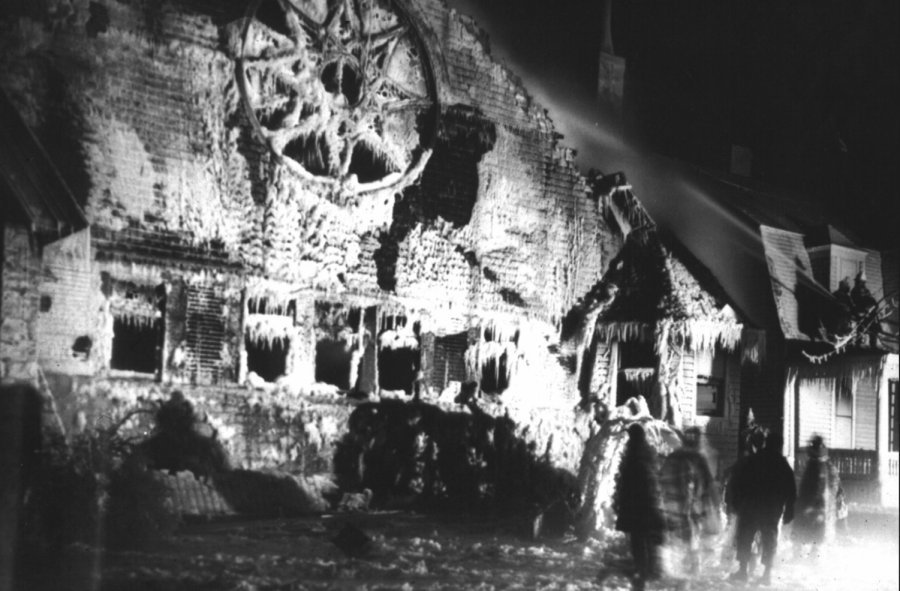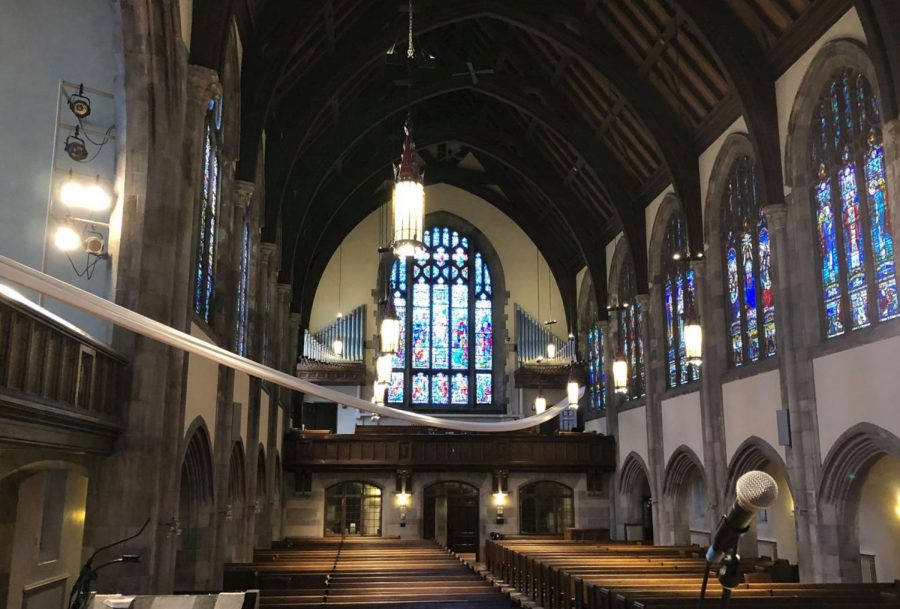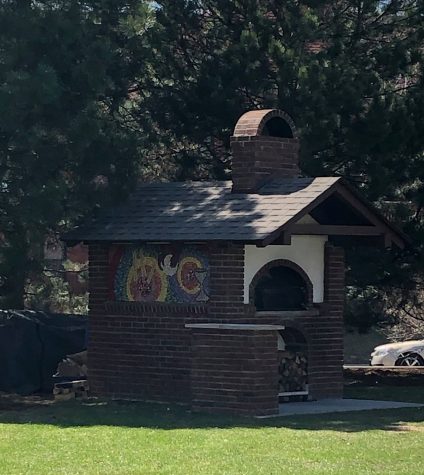Beauty out of ashes
In the wake of recent tragedies befalling places of worship worldwide, a look back on the 1925 burning of Hamline Church.
May 1, 2019
The world watched live as an inferno immersed the nearly 900-year-old cathedral Notre-Dame de Paris on April 15, claiming its towering spire and historic wooden roof. That same day, flames broke out at Jerusalem’s Al-Aqsa Mosque, the third holiest site in Islam, which dates back in its earliest form to the year 705. While this blaze was brief and left minimal damage, it brought greater attention to persecution of Muslims in China’s Xinjiang province, where the 750-year-old Keriya Aitika Mosque, as well as many other historic Islamic sites, was allegedly demolished by the Chinese government in 2018, according to satellite images posted on Twitter. Less than a week before the fires in Paris and Jerusalem, a suspect was arrested for arson of three black churches in St. Landry Parish, La.
Though some of these tragedies were intentional and others were not, a little closer to home, Hamline United Methodist Church also has destruction etched in its history. The day after Christmas, 1925, flames completely decimated the structure of the original church building, then called Hamline Methodist Episcopal Church. The blaze, which burned everything from church records to the pipe organ to the stained-glass windows, is believed to have originated from the furnace, possibly after having flammable Christmas decorations set atop it.

The remains of Hamline Church’s structure following the 1925 fire.
Prior to the fire, plans for a new church were already in discussion, as the existing sanctuary was too small to accomodate a rapidly growing congregation.
“Because they’d already been thinking about building a new church, [the Board of Trustees] got together within that first week after the fire… making plans for what the building was going to be like,” Hamline Church historian and archivist Mary Bakeman said.
Among the congregation was Fred Slifer, a protege of famed French architect Emmanuel Masqueray. He and fellow Masqueray student Frank Abrahamson drew plans for a Gothic-style building, completely different than the previous structure. The same style in which Notre-Dame was built, Gothic cathedrals are cross-shaped, and are also characterized by features such as flying buttresses, stained-glass windows and a rib vaulted ceiling. Bakeman drew parallels between the designs of Notre-Dame and Hamline Church.
“There’s a lot of hand carvings at Notre-Dame, there are a lot of hand carvings here,” Bakeman said. “They have gargoyles at Notre-Dame that take care of the rainwater. We have gargoyles that take care of the rainwater. There were flying buttresses at Notre-Dame. We have flying buttresses, though not quite as large as they are at Notre-Dame… We don’t have the towers, but you can’t have everything.”
Unlike Notre-Dame, Hamline Church boasts a roof of steel rather than wood.
“Because we’d had this fire, and because we were being built much later than our friends over at Notre-Dame, there are some things that we did in building this church to make it safer from fire,” said Priscilla Luitjens, member of the church’s Ministry of Memory.
While the church’s beams are covered in wood, to look in sync with Gothic design, they are really steel underneath.

Hamline Church’s interior boasts Gothic design, with stained-glass windows and wood-covered steel beams.
Construction of the church was priced at $250,000, more than $3.6 million in today’s money. Fire insurance covered a mere tenth of the cost, so the church took out a mortgage. While the building was completed in 1928, the mortgage took over two decades to pay off.
“The problem is, that if you finish your building in 1928… what happens in the 1930s?” Bakeman said.
The Great Depression slowed the church’s journey out of debt. At one point, the congregation even considered selling the finished building to a Catholic church. Yet they pressed on, raising money through sources such as a State Fair dining hall and even Hamline University itself, until the mortgage, like the original church structure, was set aflame in 1949.

This bread oven stands where Hamline Church once stood, at the corner of Asbury and Englewood.
Today, children play where the first Hamline Church stood, slightly west of the current sanctuary near the education wing, constructed in the 1950s. A bread oven sits at its former residence on Asbury and Englewood, where pizza nights are hosted when the weather is nice.
In 2009 and 2011, Professor Brian Hoffman’s Excavating Hamline History class conducted archaeological digs there, searching for remnants of the fire. Most of what was discovered was “rusted up metal, nails… if you didn’t know where it came from, you wouldn’t even necessarily recognize it as anything,” but shards of stained glass, which Hoffman says are his favorites, were also found, as well as charred spruce needles from the Christmas celebration and a pair of safety scissors where the Sunday school was.
The fire also lives on through those who experienced it firsthand. There are still a couple of members of the congregation, now in their nineties, who were toddlers at the time of the blaze.
“It is just part of the DNA of this church,” Reverend Mariah Tollgaard said. “[They were] so little that they don’t have a memory of what happened… They remember more the enthusiasm of building a new church, and being a part of something new.”
She referenced the tenet of resurrection central to the Christian faith.
“People were able to turn to this hopeful idea of rebuilding,” Tollgaard said. “The story of our faith is that out of death comes new life, and new possibilities.”

